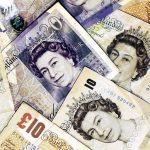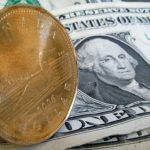Australian dollar came off its highest level in five months against the greenback on Wednesday, as market players locked in their profits after the disappointing US non-farm payrolls report.
AUD/USD slid to a session low at 0.9632 at 5:25 GMT, after which consolidation followed at 0.9640, plunging 0.72% for the day. Support was likely to be found at October 17th low, 0.9528, while resistance was to be encountered at current session high, 0.9756.
Earlier today it became clear that Australian index of consumer prices (CPI) beat analysts projections during the third quarter of the year. The CPI rose 2.2% in Q3 on annual basis, while expectations pointed a 1.8% advance. On quarterly basis, consumer price inflation climbed 1.2% in Q3, again above the preliminary estimates of a 0.8% increase and following the 0.4% gain recorded during the second quarter of the year.
This report “reinforces markets’ belief that the RBA will stay on hold and is done cutting rates for now, and that is positive for the Australian dollar,” said Divya Devesh, a foreign-exchange analyst in Singapore at Standard Chartered Plc., cited by Bloomberg. The national currency is “probably getting a little bit out of their comfort zone, so we expect them to come back to a dovish tone and then eventually ease”, he referred to central banks policymakers.
Traders saw an 82% probability that the Reserve Bank of Australia will maintain its benchmark interest rate at 2.5% this year, while odds of such an action were 54% at the end of September, according to swaps data by Bloomberg News. The central bank is pursuing an annual rate of inflation in the range between 2% and 3%, as it has reduced its benchmark rate by 2.25% to the current record low level since the fall of 2011.
The Australian dollar has appreciated 2.7% since October 1st, when the RBA said in its policy statement that the national currency was still weaker in comparison with levels recorded in April. However, this came in contrast with another statement on September 3rd, when the bank said that the exchange rate might “depreciate further over time”.
Additionally, today the Conference Board reported that its leading index for Australia, which is a key indicator in forecasting nations economic growth in a short term and intermediate term, dropped 0.2% in August, after climbing 0.2% in the preceding month.
In the mean time, the US dollar fell sharply against its major peers yesterday after the Department of Labor in the United States reported, that employers in the country added fewer than projected job positions in the month of September. The private sector added 148 000 jobs in September, below preliminary estimates of 180 000 positions, and following the revised 193 000 new jobs in August up from 169 000 previously. On the other hand, the rate of unemployment decreased to 7.2% in September, marking its lowest level since November 2008, from 7.3% in August. The jobs report came out 18 days behind its scheduled date, because of the partial government shutdown.
Elsewhere, the Aussie was gaining 0.66% against the kiwi dollar, with AUD/NZD cross trading at 1.1482 at 8:33 GMT, after the pair reached its highest point since September 12th at 1.1495. EUR/AUD cross was gaining 0.59% on a daily basis to trade at 1.4285 at 8:37 GMT.





